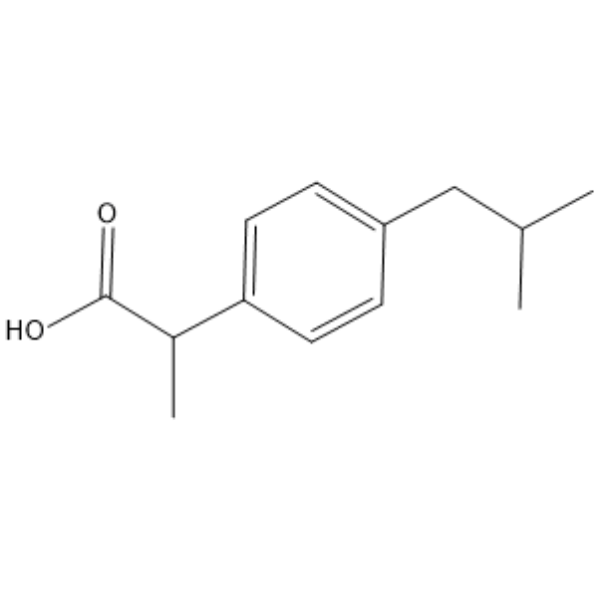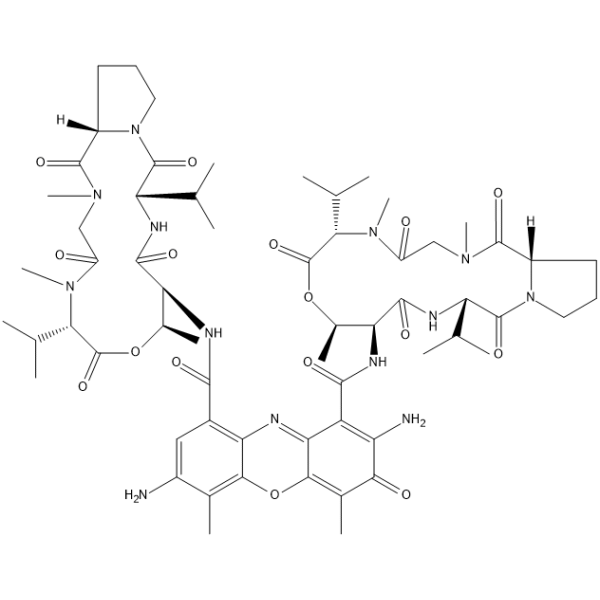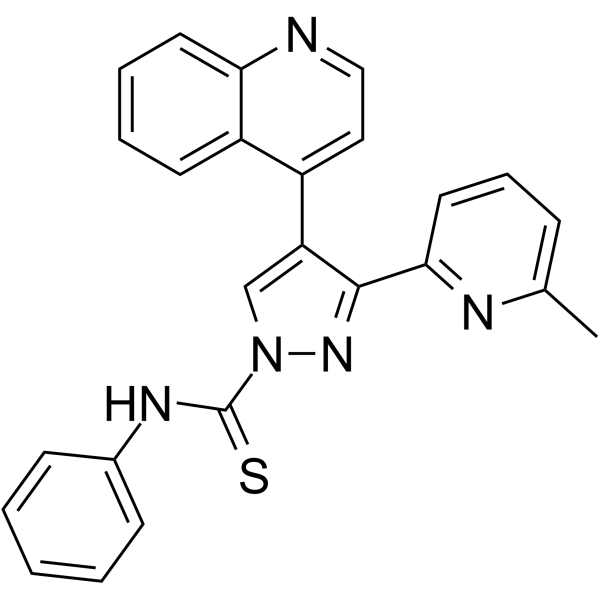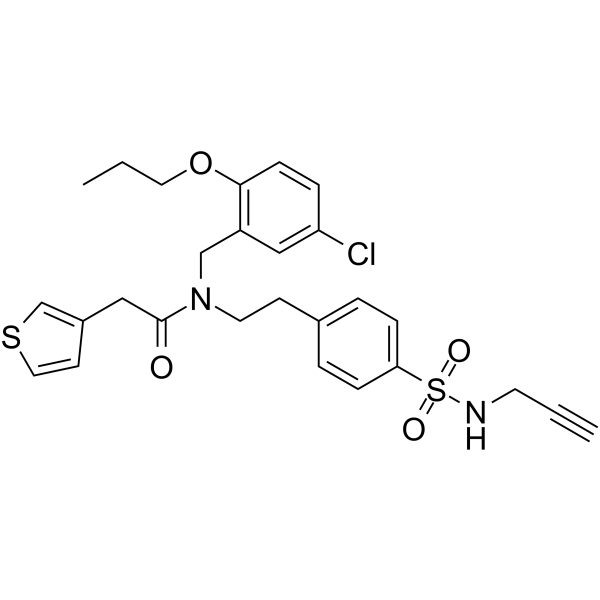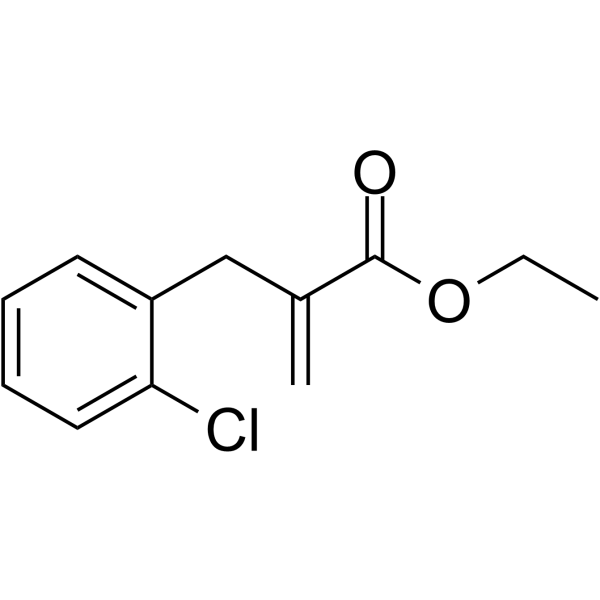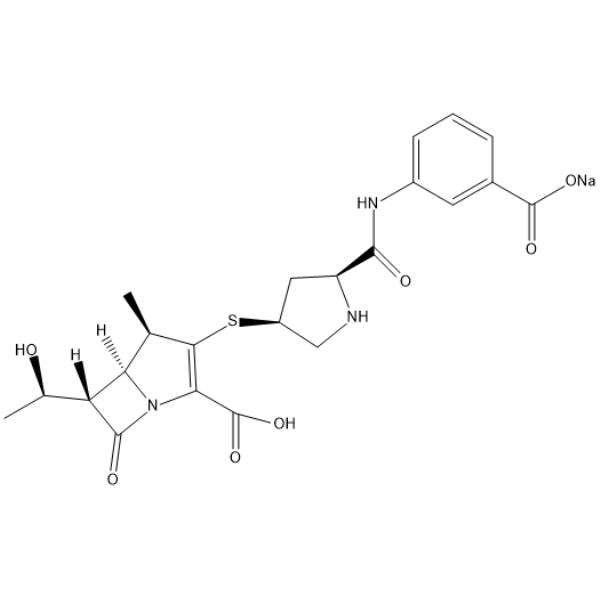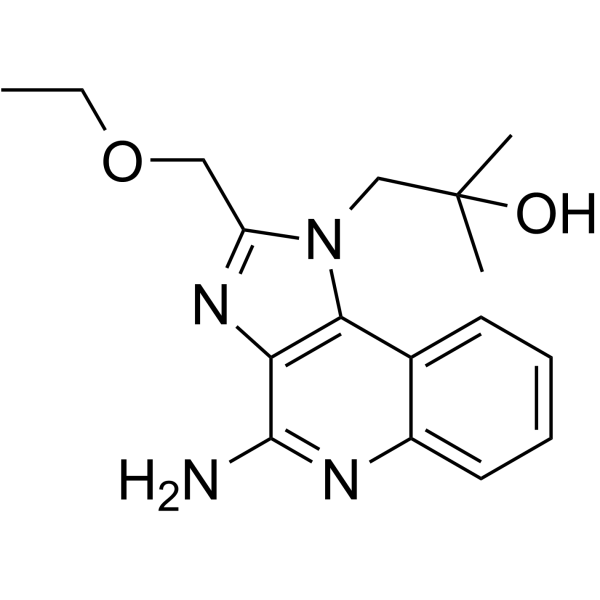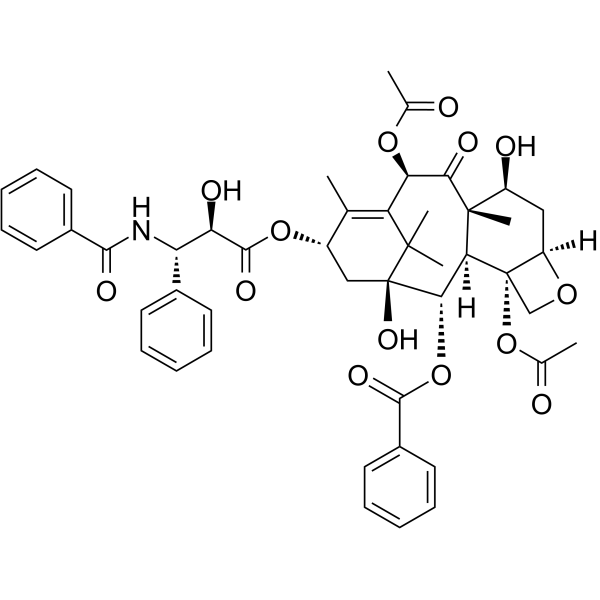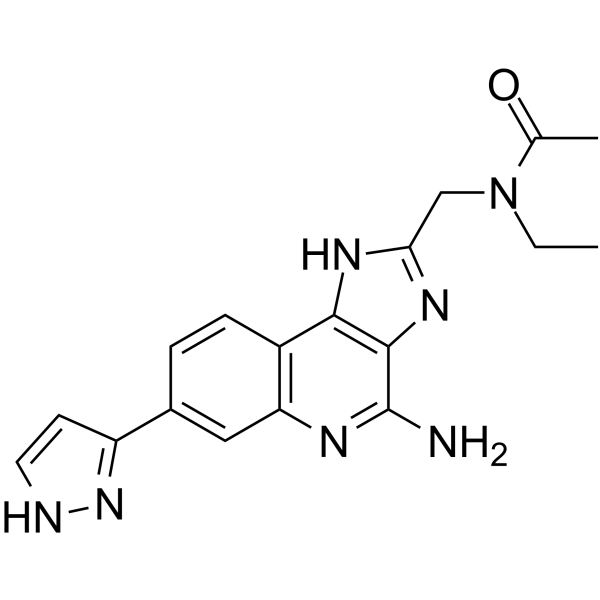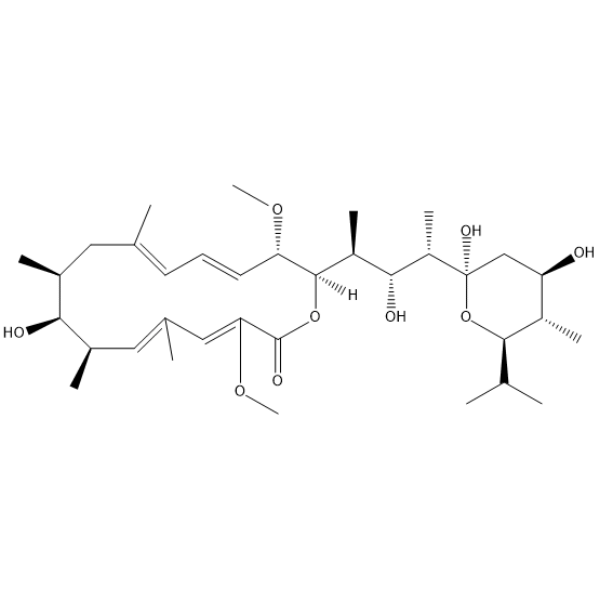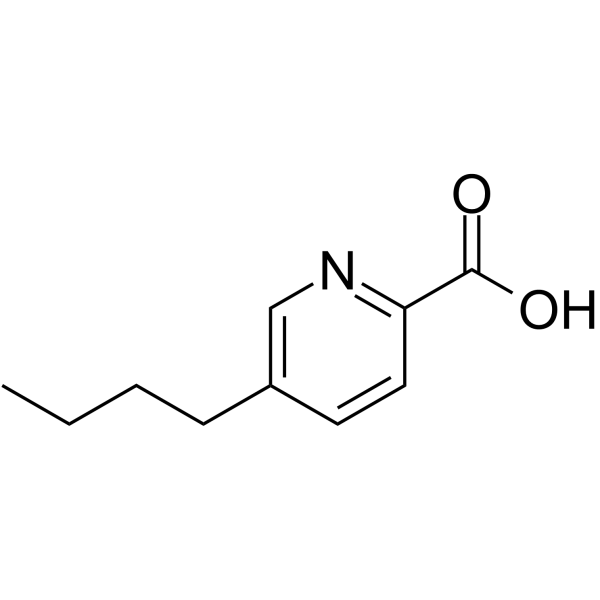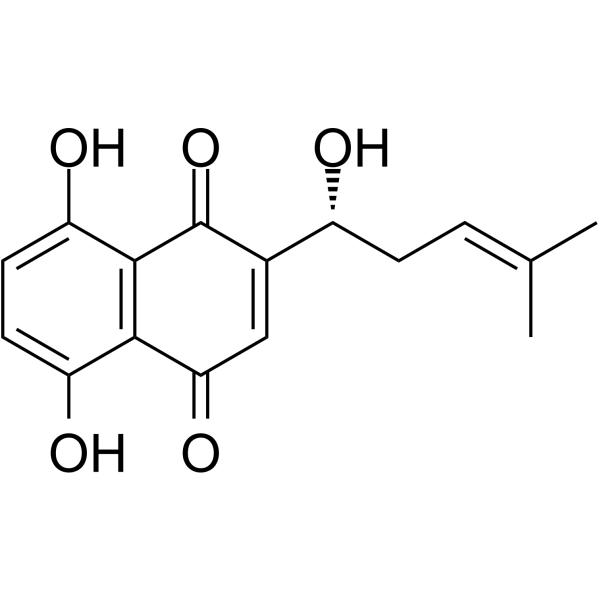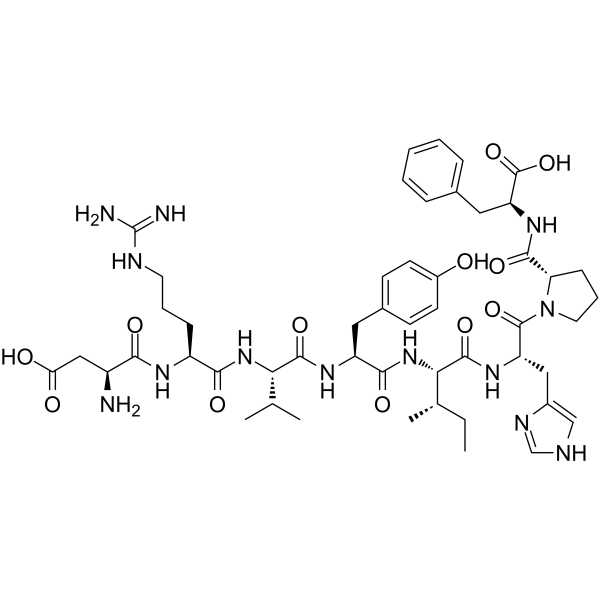|
BP22561
|
Ibuprofen
|
|
|
|
|
Ibuprofen ((±)-Ibuprofen) is a potent, orally active, selective COX-1 inhibitor with an IC50 value of 13 μM. Ibuprofen inhibits cell proliferation, angiogenesis, and induces cell apoptosis. Ibuprofen is a nonsteroidal anti-inflammatory agent and a nitric oxide (NO) donor. Ibuprofen ((±)-Ibuprofen) can be used in the research of pain, swelling, inflammation, infection, immunology, cancers[8].
|
|
BP22571
|
7-Aminoactinomycin D
|
|
|
|
|
7-Aminoactinomycin D (7-AAD) a fluorescent DNA stain, is a potent RNA polymerase inhibitor. 7-Aminoactinomycin D selectively binds to GC regions of the DNA. 7-Aminoactinomycin D also has antibacterial effects.
|
|
BP22516
|
A 83-01
|
|
|
|
|
A 83-01 is a potent inhibitor of TGF-β type I receptor ALK5 kinase, type I nodal receptor ALK4 and type I nodal receptor ALK7, with IC50s of 12 nM, 45 nM and 7.5 nM against the transcription induced by ALK5, ALK4 and ALK7, respectively.
|
|
BP22479
|
YQ128
|
|
|
|
|
YQ128 is a potent and selective second-generation NLRP3 inflammasome inhibitor with an IC50 of 0.30 µM. YQ128 significantly and selectively suppresses the production of IL-1β, but not TNF-α, and it can cross the BBB to reach the CNS. YQ128 has anti-inflammatory activity.
|
|
BP22480
|
INF39
|
|
|
|
|
INF39 is a non-toxic, irreversible inhibitor of NLRP3 and blocks NLRP3 activation by irreversibly interacting directly with NLRP3 and partially inhibiting LPS-driven pro-inflammatory gene expression.
|
|
BP22569
|
Ertapenem sodium
|
|
|
|
|
Ertapenem sodium (L-749345) is a broad spectrum and long acting β-lactam antibiotic. Ertapenem sodium has a broad-spectrum anti-anaerobic activity against a variety of anaerobes with a mode MIC of 0.12 μg/mL. Ertapenem sodium can be used for the research of severe infections caused by bacteria in the skin, lungs, stomach, pelvis, and urinary tract.
|
|
BP22507
|
Resiquimod
|
|
|
|
|
Resiquimod is a Toll-like receptor 7 and 8 (TLR7/TLR8) agonist that induces the upregulation of cytokines such as TNF-α, IL-6 and IFN-α.
|
|
BP22564
|
Paclitaxel
|
|
|
|
|
Paclitaxel is a naturally occurring antineoplastic agent and stabilizes tubulin polymerization. Paclitaxel can cause both mitotic arrest and apoptotic cell death. Paclitaxel also induces autophagy.
|
|
BP22481
|
BMS-986299
|
|
|
|
|
BMS-986299 is a novel NLRP3 agonist that induces IL8 release to activate natural killer (NK) cells.
|
|
BP22563
|
Bafilomycin A1
|
|
|
|
|
Bafilomycin A1 (BafA1) is a specific and reversible inhibitor of vacuolar H+-ATPase (V-ATPase) with IC50 values of 4-400 nmol/mg. Bafilomycin A1, a macrolide antibiotic, is also used as an autophagy inhibitor at the late stage. Bafilomycin A1 blocks autophagosome-lysosome fusion and inhibits acidification and protein degradation in lysosomes of cultured cells. Bafilomycin A1 induces apoptosis.
|
|
BP22572
|
Fusaric acid
|
|
|
|
|
Fusaric acid is a potent dopamine β-hydroxylase inhibitor.
|
|
|
Shikonin
|
|
|
|
|
Shikonin is a major component of a Chinese herbal medicine named zicao. Shikonin is a potent TMEM16A chloride channel inhibitor with an IC50 of 6.5 μM. Shikonin is a specific pyruvate kinase M2 (PKM2) inhibitor and can also inhibit TNF-α and NF-κB pathway. Shikonin decreases exosome secretion through the inhibition of glycolysis. Shikonin inhibits AIM2 inflammasome activation.
|
|
BP22565
|
Angiotensin II human
|
|
|
|
|
Angiotensin II (Angiotensin II) is a vasoconstrictor and a major bioactive peptide of the renin/angiotensin system. Angiotensin II human plays a central role in regulating human blood pressure, which is mainly mediated by interactions between Angiotensin II and the G-protein-coupled receptors (GPCRs) Angiotensin II type 1 receptor (AT1R) and Angiotensin II type 2 receptor (AT2R). Angiotensin II human stimulates sympathetic nervous stimulation, increases aldosterone biosynthesis and renal actions. Angiotensin II human induces growth of vascular smooth muscle cells, increases collagen type I and III synthesis in fibroblasts, leading to thickening of the vascular wall and myocardium, and fibrosis. Angiotensin II human also induces apoptosis. Angiotensin II induces capillary formation from endothelial cells via the LOX-1 dependent redox-sensitive pathway.
|
